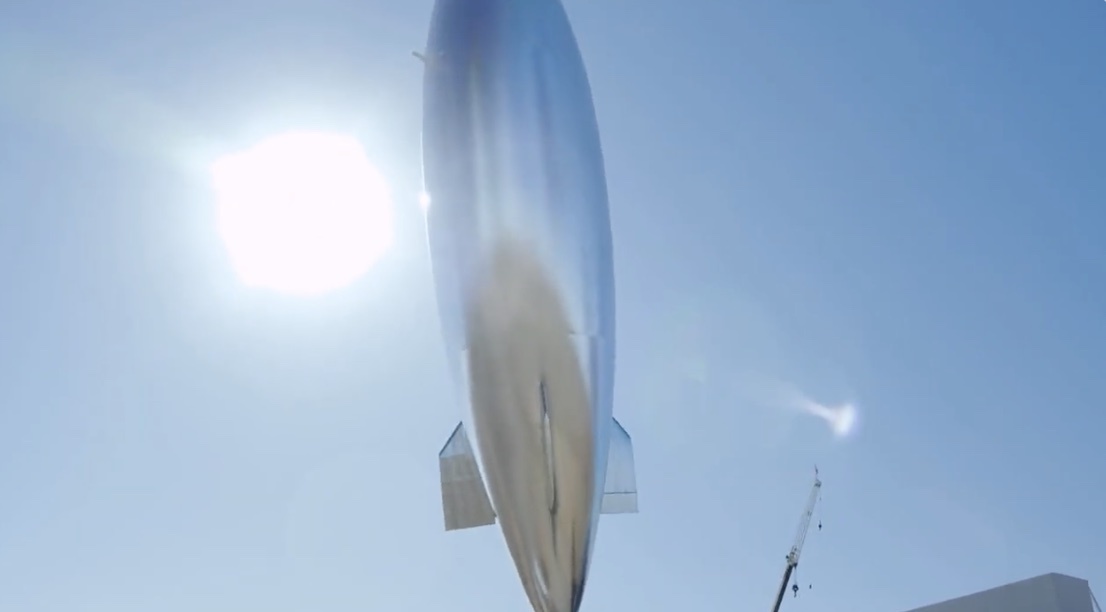18.05.2023

About SCEYE
Sceye is a material science company leading a new generation of high-altitude platform stations, or HAPS. Our groundbreaking work will help transform lives.
Sceye’s success has been built on a meticulous iterative development and testing process combined with extensive flight experience, allowing us to create the most advanced product in the HAPS sector.
Our engineering team has a wealth of diverse expertise that combines the best of America’s Cup, aerospace and advanced academic research.
We chose the form factor of an airship over balloons and fixed wing aircrafts as it allows for geostationary capability while lifting and powering far more payload than any other platform.
Sceye is solar powered during the day and battery powered at night. We don’t rely on rocket fuel like satellites or single use plastics like balloons.
Working with our global partners, our mission is to connect and protect our planet from the stratosphere.

Stratospheric infrastructure
Sceye is building the world’s most advanced, high-altitude platforms. Robust, versatile and solar-powered, they operate in the stratosphere at 65,000 feet. From here, they can deliver super-fast internet directly to device and high-resolution imagery of the Earth in real time.
Our mission is to use this pioneering technology to improve people’s lives and protect our planet.
Internet access is a basic right that improves healthcare, education, quality of life and democracy itself. Sceye can provide the first truly equitable connectivity across rural communities and urban centers — connecting underserved locations that have previously been out of reach.
We’re also committed to monitoring and protecting the Earth. Our platforms can carry advanced sensors that can track greenhouse gas emissions in real-time, supporting the development of enforceable, accountable climate-friendly policies.
Sceye believes that doing good is good business. We are committed to providing universal connectivity, and to enabling environmental stewardship.
+++
Equitable connectivity

We are creating a new and equitable service that works for everyone. We work with networks to extend broadband coverage to every corner, so that nobody’s left behind.
Sceye’s ability to lift and power more than any other platform and hold station in the stratosphere for months at a time, makes Sceye a superior solution to both satellites, terrestrial infrastructure and other HAPS (High Altitude Platform Stations).
By lifting a cell tower to this altitude, Sceye extends its reach 100s of times to improve the efficiency and speed, and because Sceye connects directly to any device – cellphone, tablet, PC – everyone can access a high-speed internet service from anywhere.
To deliver this breakthrough, we deploy state-of-the-art massive active MIMO array antennae and 3D beamforming technologies that deliver extended range, efficiency and a high quality of service — far beyond that of current systems.
Sceye platforms uniquely hold station for precise delivery of coverage where it’s needed, filling in all existing coverage gaps. Sceye complements existing ground networks by avoiding interference, efficiently re-using their spectrum to provide a compatible, reliable and rapidly scalable layer of network in the sky.
+++
Earth observation
Sceye partners with business, government and academia to deploy persistent imaging and data collection services. We offer a versatile and high-resolution payload for real-time Earth observation and environmental monitoring.
Forest fires and land protection
Early detection and interception of disasters and environmental recklessness before they spiral out of control and destroy critical infrastructure, ruin wild areas and deplete our natural resources
Maritime search and rescue
High-resolution maritime monitoring to identify dark vessels, illegal activity and to take the ‘search’ out of search and rescue
Industrial emissions monitoring
We use sensors that monitor methane and other greenhouse gases in real time, providing a critical tool for enforcing climate targets
Science for the stratosphere
We’ve developed the most advanced materials
Our hull fabric in comparison to the nearest alternative used by others in attempts to build the stratospheric platform
- 5 times stronger relative to weight
- 1500 times more gas tight
- UV and ozone resistant
Our advanced lithium-sulphur battery
- Energy density more than 400 Wh/kg
- Nearly 2 times greater energy density than best electric vehicles
- 400 Wh/kg is the threshold at which airplanes go electric
- Advanced lamination for weathering layers has achieved extreme weight reduction
- 85% lighter Copper Indium Gallium Selenide Cells
- 50% lighter Gallium Arsenide Cells

SCEYE REACHES STRATOSPHERE; FLIES AT 64,000 FT.
“We view the successful flight and the record setting data connection as a significant milestone for our technology; one that could dissolve the rural broadband barrier,” said Sceye CEO Mikkel Vestergaard Frandsen.
Sets Long Range Record in Data Connection
JOINS CONSORTIUM TO DELIVER BROADBAND TO NAVAJO NATION
ROSWELL, N.M.– Sceye, a developer of high-altitude platform stations (HAPS), announced today that it successfully launched its stratospheric platforms and flew at an altitude of 64,600 ft. The announcement comes on the heels of Sceye’s long-range record for maintaining data connection in OpenRAN at a distance of 140km. With financial support from the State of New Mexico, the company also joins a consortium of New Mexico-based telecommunications companies and tribal entities to pilot delivery of universal broadband access to the Navajo Nation.
“We view the successful flight and the record setting data connection as a significant milestone for our technology; one that could dissolve the rural broadband barrier,” said Sceye CEO Mikkel Vestergaard Frandsen.
Sceye’s unmanned stratospheric platform launched from Roswell at 11:20 a.m. MDT on Wednesday, May 19. It landed safely that afternoon at 1:30 p.m. MDT. The company recently conducted tests to determine the data connection range of its systems. Standard LTE technology allows for a range of 100km; Sceye’s systems have added an additional 40km, setting a long-range record in LTE OpenRAN architecture. Sceye’s combination of technologies can cover areas as wide as 27,000 square miles with high-speed broadband for all users of fixed and mobile, carving a path forward to providing true equitable access.
Sceye, Sacred Wind Communications, CellularOne, PVT Networks, Santa Fe Indian School, and Navajo Technical University are banding together with the goal of achieving 100% connectivity across the Navajo Nation. According to the Navajo Tribal Utility Authority, 60% of the Navajo Nation’s over 300,000 residents do not have fixed Internet access.
“The consortium is a major leap forward in closing the digital divide for the Navajo Nation,” said John Badal, CEO of Sacred Wind. “Sceye’s tower-in-the-sky approach could avoid building hundreds of new cell towers across the State and the accompanying need to use tribal lands.”
In partnership with the consortium, Sceye will pilot one of its HAPS over an area of approximately 6,000 square miles to demonstrate 100 Mbps download speeds to homes, schools and clinics, which is the FCC’s gold standard for rural area broadband.
“The State is excited to support this innovative effort by Sceye and its partners to bring more affordable broadband and telecommunications to tribal and rural communities throughout the state,” said Economic Development Cabinet Secretary and Spaceport Authority Board Chair Alicia J. Keyes.
Sceye aims to provide universal broadband to help lift billions of unconnected and under-connected people out of poverty, conduct high-resolution, real-time Earth monitoring to combat climate change, and early detection and interception of natural disasters before they spiral out of control.
About Sacred Wind and the Sceye-New Mexico Consortium
Established in 2006, Sacred Wind is the only privately-owned local rural telco created primarily to bridge the digital divide for tribal communities in New Mexico. It broke new ground in 2008 by successfully completing a trial of fixed wireless equipment for USDA loan and grant purposes. Since then, it has implemented innovative methods to bring broadband service to previously unserved homes in other rural areas of New Mexico and was selected by Microsoft Airband as a rural partner in the development of innovative fixed wireless solutions for the State.
SBi, dba CellularOne, provides mobile and fixed wireless services primarily on tribal lands in New Mexico, Arizona, and Utah and has the largest mobile wireless infrastructure developed on Navajo Lands, providing 4G and 3G broadband and voice services in its footprint.
PVT, dba Penasco Valley Telecommunications Cooperative, is a rural telecommunications company headquartered in Artesia, NM and employs landline and fixed wireless technologies to provide voice and broadband services to its customers. It possesses the fastest fiber-based interconnections in southeastern New Mexico.
Navajo Technical University (NTU), with its main campus in Crownpoint, NM, is a Navajo Nation higher education institution that offers a high quality educational experience in a supportive, culturally diverse environment. NTU is led by visionaries experimenting in new Information Technologies for the advancement of its students and the Navajo Nation. NTU is a major figure in the testing and expansion of broadband services via the newly allocated 2.5 Ghz spectrum.
Santa Fe Indian School (SFIS) was established in 1890 to educate Native American children from across the Southwest. SFIS measures itself by how well it develops “the Ideal Graduate”, who pursues an education while reinforcing their tribal culture, working productively with others, and acquiring critical thinking and creative problem solving skills. SFIS plays a leadership role in pursuing opportunities for tribal communities with the use of technology and has contributed to the development of several broadband projects to benefit tribes in New Mexico.




